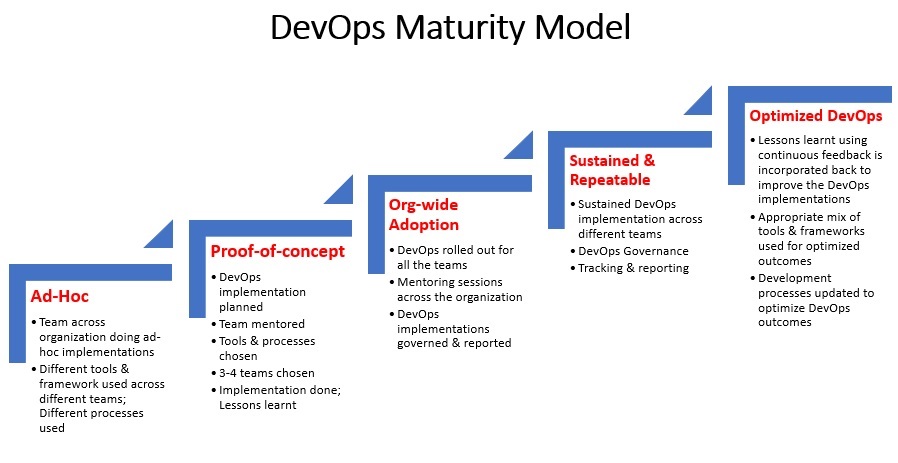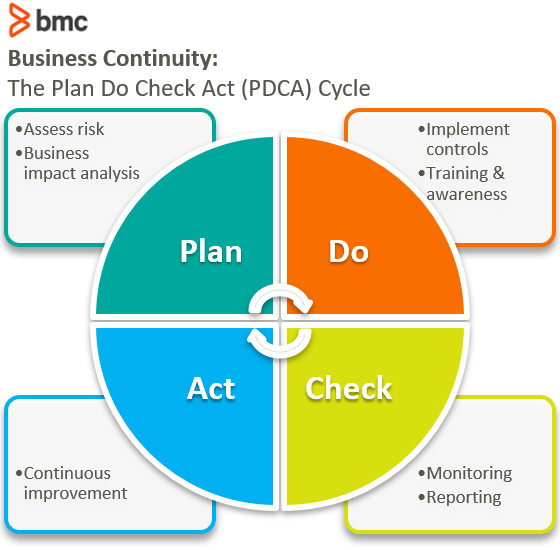Every DevOps Maturity Model has levels. This maturity model is designed to help you assess where your team is on their DevOps journey.
 Devops Maturity Model Telstra Devops Implementation Data Analytics
Devops Maturity Model Telstra Devops Implementation Data Analytics
A DevOps Maturity Model to Monitor Your Progress 14 Minute Read.

Devops maturity model. This online DevOps Maturity Assessment questionnaire will help you understand your current strengths and weaknesses and then recommend resources that can support you in taking the next steps on your DevOps journey. The following is the DevOps Maturity Model which Telstra team looks to have worked upon. To define model areas I have used key elements for process improvement.
The DevOps Maturity Model can help you enhance the efficiency of the entire workflow decrease the time-to-market while improving release cycles augmenting product quality and test accuracy. This research aims to identify and. The details have been taken from this postYou could use the details given below to lay out the maturity model for DevOps implementation in your organization.
Summarized DevOps Maturity model includes five transformation stages. I like it simple. Measure to customer value Devops Maturity Model Define Level Defined and Document Oriented Team base on platform and technology Extend Team Collaboration Common Process for all changes One Backlog per Team Cross Team Continuous Improvement Team Response all the way to production Cross Functional Team Implementation Level 33.
Organizations use these models to determine the current and desired level of DevOps related topics. And I have a somewhat shaky relationship with maturity models as might have gathered from some of my other posts. The Four Stages of DevOps Maturity.
The next step is where the DevOps practices start. With clear insights on where you stand in your DevOps journey you are better equipped to evolve into a highly matured environment on an organizational level in a shorter time span. The first level is the initial level.
A traditional setting with Dev and Ops departed is handled. I see the power of using a maturity model or assessment to help people understand where they are but its also so prone to Dunning-Kruger. DevOps maturity model is based on CMM approach which allows to structure potential goals between some related areas based on five maturity levels.
This model can help to detect gap between existing situations and desired ones. This defines DevOps maturity by the capacity to ease infrastructure handling skills around automation streamlining and facilitating self-service to store environments with other businesses. The organization realizes it wants to change and take a step to the next level.
Ad Built for professional teams. This article was derived from a DevOps Maturity Level Assessment tool that we use internally to help our clients benchmark their proficiency in DevOps. To aid the broader community we have made this assessment publicly available.
For instance you might be in a traditional setup where development and operations are separate. The MLOps maturity model helps clarify the Development Operations DevOps principles and practices necessary to run a successful MLOps environment. In this post you will get a quick glimpse of how Telstra successfully rolled out DevOps across the entire organization 170 teams.
Self-assessment questions of DevOps Maturity. DevOps Maturity Model DevOps isnt a destination its a journey towards a frequent and more reliable release pipeline automation and stronger collaboration between development IT and business teams. People process and.
Secure your workflow with Bitbucket. A DevOps Maturity Model is a conceptual model in the form of a matrix of maturity levels at one side and areas with subtopics at the other side. This is where you begin your DevOps journey.
This model has many parallels to how I see large organizations embracing DevOps over the course of last several years. Ad Built for professional teams. Its intended to identify gaps in an existing organizations attempt to implement such an environment.
However there are few DevOps maturity models which have been emerged as means to assess DevOps adopted practices. Secure your workflow with Bitbucket.


